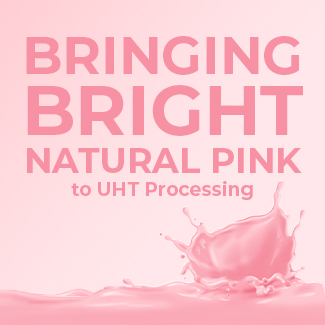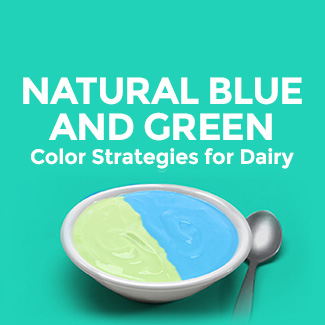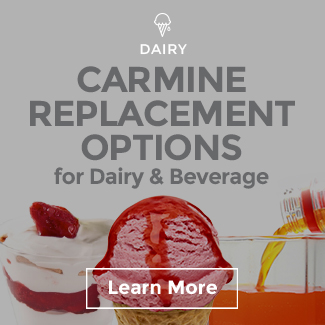Natural Color for Vegan and Plant-Based Dairy Alternatives
In today’s ever-changing market, brands innovating to meet new demands seem to resonate strongly amongst consumers. One category that’s pushing the boundaries of R&D is plant-based and vegan dairy alternatives, including ice creams, creamers, yogurts, and beverages. The number of vegan dairy launches has increased by 112% over the last five years (Mintel 2018). The number of consumers who actually consider themselves vegan or vegetarian remains relatively small. However, there has been a growing trend of consumers integrating more plant-based foods into their diets for health and sustainability reasons.
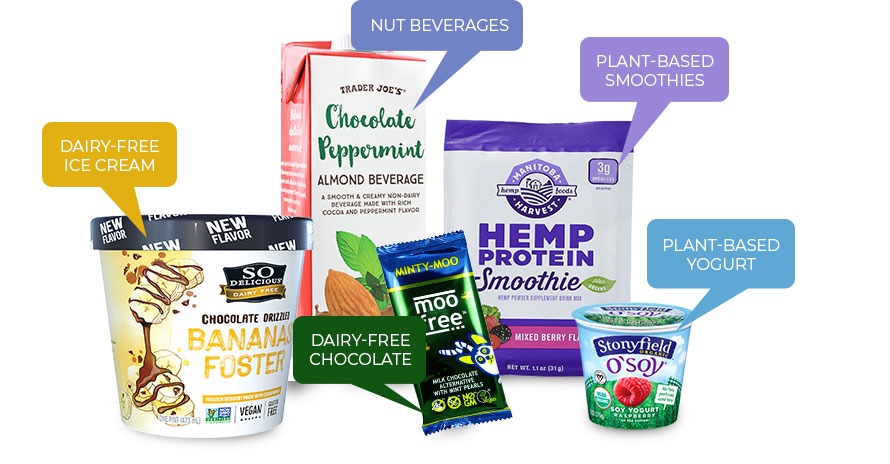
The success of these categories stems greatly from products offering a dairy-free profile without any compromise on taste. Brands seem to be continually differentiating themselves through unique flavor and color profiles.
Understanding the Correlation between Taste and Color
A 2017 Sensient study conducted with over 1,500 consumers showed a clear positive correlation between color vibrancy and taste expectations. In our research, brighter colors lifted purchase intent scores by almost 6% across eight out of the nine products tested. This result was largely driven by the notion that increased vibrancy indicates greater flavor.
According to 2018 Mintel data, nearly half of US consumers believe plant-based products need a greater variety of flavors, presenting an opportunity for product developers to innovate with natural flavor and natural food color.
Natural food color is a great way to bring new, exciting flavors to life while maintaining a plant-based and/or vegan ingredient list.

Food color from natural sources can also offer a competitive and bright advantage to brands with a dairy-free positioning.
Natural Color Strategies for Plant-Based Dairy Alternatives
There are two key technical concepts to keep in mind when working with natural colors in dairy-free products.
#1 Base Shade
A product’s base shade can impact the target end shade.
For example, starting with a beige shade versus a white shade will yield different results after color is added. In the case of dairy-free alternatives, fat content can affect the base shade and typically imparts yellow notes. Our dedicated color experts can assist with this challenge and enjoy teaching product developers about the many facets of natural food color.
#2 pH
With some natural colors, mainly those from anthocyanin sources, a change in the overall formula’s acidity can cause a shift from one shade to another. Generally, color suppliers with a broad natural color portfolio can mitigate this problem. Where one source shifts in shade due to pH, another one yielding the same hue can be pulled from the library as a suitable option.
Whatever your needs are for color, my team and I are happy to help you create a unique product with colors that align with either plant-based or vegan positioning.
Check out some of our ideas…
Concept:
Color Solutions:
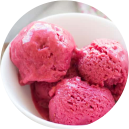
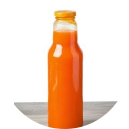
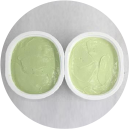
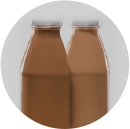
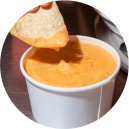
See a shade or concept that interests you? Request samples of any shade here.
If you would like to setup a meeting to talk about natural food colors, please feel free to schedule one with the team—we love talking about color!



